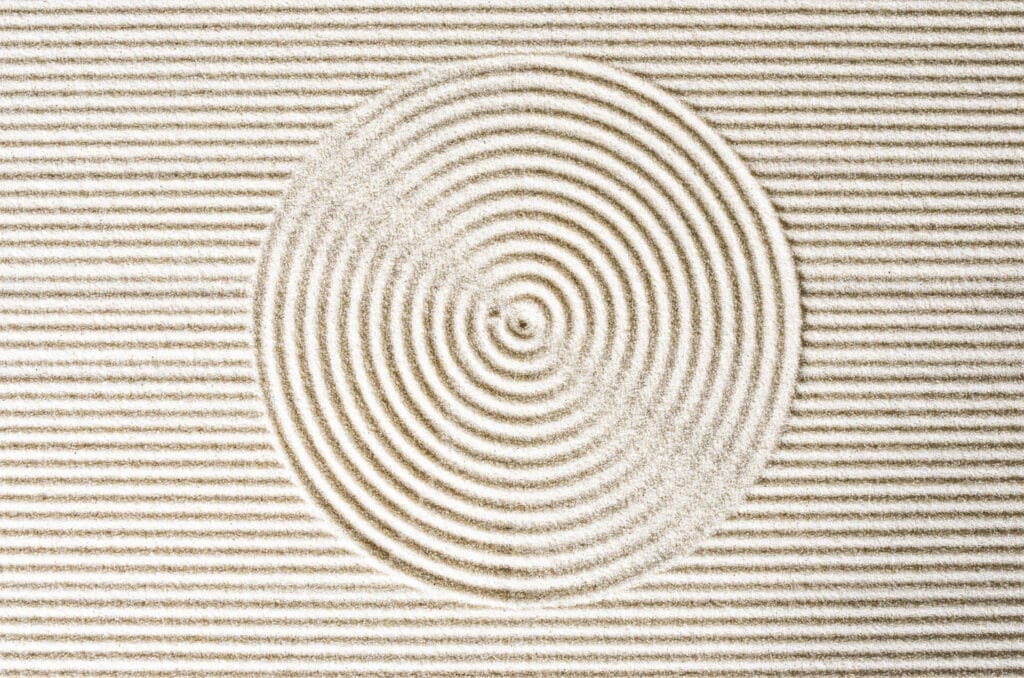A Buddhists View on Releasing Attachment

As I transition into this new world, I am reminded of a Buddhist view on releasing attachment. I let go of a lot during COVID, including In-Office Yoga, a friend who died of COVID, and my favorite local restaurant. Now, as I enter into the holidays, the concept of a Buddhist attachment is becoming more palpable.
The holiday is the season of Finding the Exhale, which comes with releasing attachment. Just like the breath moves in and out, everything in this life comes in and goes away. A lot of the time, however, we like to hold on too tightly.
When we practice mindfulness (such as Office Yoga and meditation), we look within to see the thoughts, emotions, and physical sensations come and go in a natural way. There’s an ease to it, like the river flowing or the tides rolling.
One of the main Buddhist and Yogic Principles to incorporate more of this freedom is by the practice of NON-ATTACHMENT or vairagya.
This isn’t just non-attachment to material items, people, or places. Being able to release the grip on anything- even your “self”- is where true freedom lies.
Rather than thinking of us as a noun – a finite, unchanging thing – we can learn that each of us is the process of life expressing itself in its ever-changing form.
By practicing non-attachment we can see ourselves as more of a verb, a field of activity, and experience the life that’s always here changing.
Through a Buddhist attachment lense, Upādāna, there are 4 kinds of attachments:
- To the sense of pleasure (kamupadana)- All experience is fleeting, including the last tasty meal you’ve had, or the luxurious massage that one time.
- To ideas and opinions (ditthupadana)- Our viewpoints are strong and others are too. We can open up and see other perspectives and be willing to change, to say we are wrong when we are wrong. Yes, we can still be courageous with “fierce compassion” to make a good change in the world while still acknowledging our biases.
- Different spiritual forms- including attachment to the dogma of agnostic beliefs (silabbatupadana). The rites, rituals, and everything we do that we think will “save us” in the end won’t.
- Concept of self, self-doctrine, permanent self- who we think we are (attavadupadana). Clinging to what we think our physical, mental, or emotional bodies should or shouldn’t be.
In this way, we must remember the difference between detachment, implying a pulling away, a distancing, a suppressing- a cop-out to being present, and nonattachment, allowing full presence, not grasping onto the past.
We can learn to see ourselves as a flow of experience. Rather than thinking Life is happening to you, you begin to see that Life is happening through you and as you. More ease in relEASEing.
If this season tells us anything, it’s that EVERYTHING is impermanent. We can unlearn to cling and crave and suffer by using the tools of non-attachment.
For teachers- I encourage us to incorporate this into the holiday season coming up. In the million ways, it can weave into interactions, our classes, finances, “shoulds”, emotions, and judgments.
On a more personal note regarding Buddhist attachment and letting go; I am starting a new business, ZaaS (Zen as a Service), in January 2022! It’s been a courageous transformation to trust my gut and begin again. I strongly believe in this new vision for workplace wellbeing. If you want to follow the journey, sign up for our newsletter at ZaaS.com!
